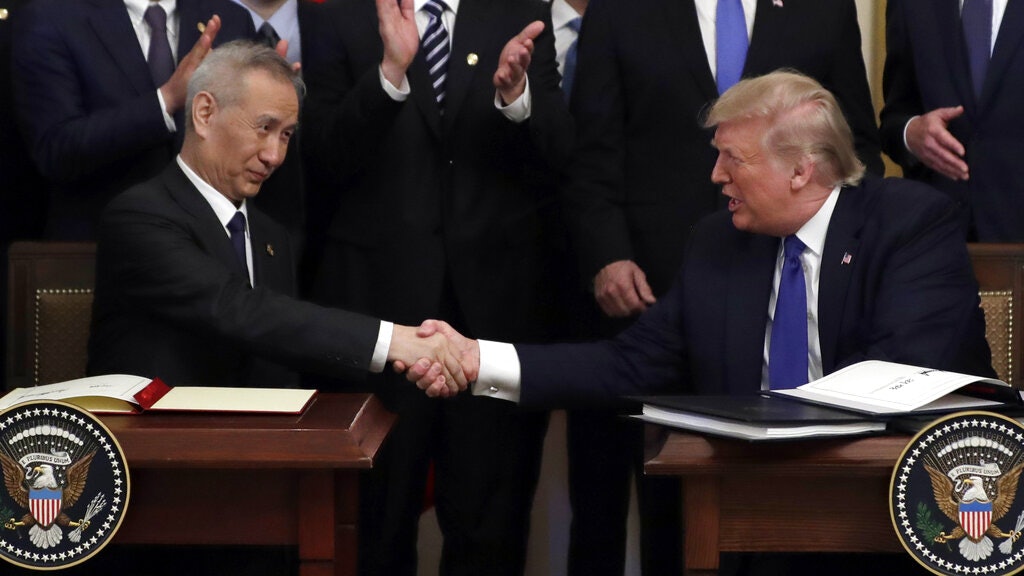China and the United States have reached the first phase of a trade agreement. US President Donald Trump and Chinese State Council Vice Premier Liu He signed the White House on January 15. In his speech, Trump said that all tariffs would be revoked after the second phase agreement was reached, and that no third phase trade agreement was expected.
The United States Trade Representative (USTR) released a 96-page agreement text, which is mainly divided into seven parts: procurement of US products, agriculture, intellectual property rights, technology transfer, exchange rates, financial services and implementation.
Buy American products
China is committed to purchasing at least US $ 200 billion in US goods and services over the next two years based on 2017. China promises to buy additional $ 77.7 billion in manufacturing equipment in stages, including industrial machinery, electronics, pharmaceuticals, aircraft, automobiles, steel, and optical and medical equipment. For energy, a minimum of $ 52.4 billion was pledged; for service products, $ 37.6 billion was purchased.
agriculture
With regard to agricultural products, China “should ensure” that it purchases US $ 32 billion of US agricultural products. China agrees to provide more agricultural economic activities and increase employment opportunities, including meat, poultry, seafood, rice, dairy products, infant formula, horticultural products, animal feed and feed additives, pet food and agricultural biotechnology projects.
Intellectual property
China agrees to adopt stronger legal protections for patents, trademarks and copyrights, including improving criminal and civil procedures to combat online infringement, piracy and counterfeit goods.
Technology Transfer
China agrees to end pressure on foreign companies to transfer technology to Chinese companies as a condition of market access, licensing or administrative permits, and pledges to exclude the benefits of the Chinese government in the transfer. China also agreed to avoid direct support for outbound investments aimed at acquiring foreign technology to meet its industrial plans.
Macroeconomic policies and exchange rates
China is committed to avoiding the devaluation of competitive currencies while not using the exchange rate as a tool to gain a trade advantage. China also agrees to disclose data on relative exchange rates and external balances. The agreement also requires China to strengthen macroeconomic and exchange rate stability, ensure that China does not use monetary measures, and expose US exporters to unfair competition.
Financial Services
China will improve US companies’ access to China’s financial services, including banking, insurance, securities, asset and fund management, and credit rating services, in order to meet US requirements for foreign equity restrictions and discriminatory regulations. US financial service providers can be more competitive, gain a more level playing field, and expand services in the Chinese market.
Enforcement and dispute resolution
China and the United States will resolve their differences in the implementation of the agreement through regular bilateral consultations, including holding semi-annual trade framework meetings and regular macroeconomic dialogues. The agreement also states that once negotiations fail to resolve differences, tariffs or other penalties will be imposed.
As for the issue of tariffs that has attracted much attention from the outside world, the United States will lower the current tariff on Chinese goods worth US $ 120 billion by 15% to 7.5%. The earlier 25% tariff increase of US $ 250 billion remains unchanged.
The United States entered into force on December 15, 2019. For Chinese-made mobile phones with a total value of nearly 160 billion U.S. dollars, tariffs on computers, toys and clothing will be postponed indefinitely. China will also postpone a 25% retaliatory tariff on US cars.












